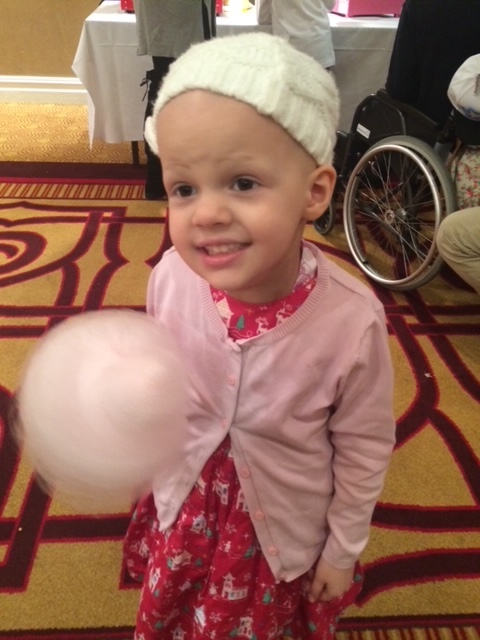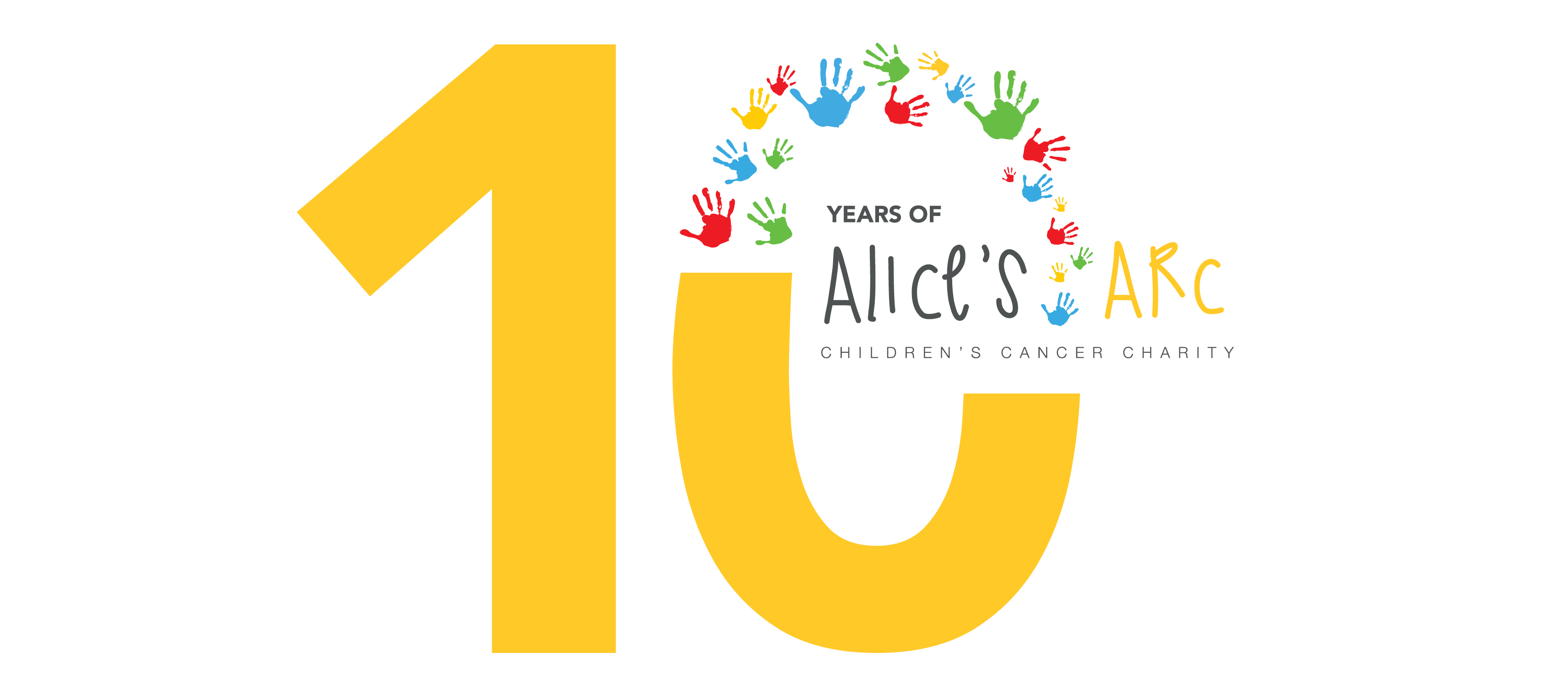In 2019 Alice Wakeling passed away, two weeks before her eighth birthday. She had been diagnosed with rhabdomyosarcoma, a rare soft tissue cancer that accounts for 5 per cent of all childhood cancers. Here, on International Childhood Cancer Day, Alice’s mum Sara Wakeling speaks about her beloved daughter’s legacy and the achievements of the charity Alice’s Arc.
We were just six months into Alice’s treatment journey when we set up our charity. She was just three at the time and I’d never heard the word rhabdomyosarcoma before. But when we asked our consultant at Great Ormond Street Hospital about research she said: “You need to speak to Professor Janet Shipley at The Institute of Cancer Research.”
Our first meeting with Janet was in 2017. It was an introduction to her lab, the work being done there on rhabdomyosarcoma, and the challenges and potential future directions of rhabdomyosarcoma research. She put together a proposal with suggested projects that could help accelerate progress in rhabdomyosarcoma research. We didn't know much about the biology of the disease at that point. Alice had come to the end of her frontline treatment and was in a period of stability. So, it was a hopeful, constructive time to start that conversation.
‘Alice had many so questions’
Alice was very cross that she had cancer. When she was very young the major issue and anxiety for her was losing her hair. When the disease returned for the first time, she was six and that was much more complicated, because she had many more questions.
She was trying to understand the disease. Why had the cancer come back again? She didn't want to have more treatment. She didn't want to lose her hair again. It took lots of negotiation to get her to have chemotherapy. Why take drugs that make you sick?
Alice had nine more months of treatment both in the UK and Europe. It was complex because she was at school and she had to contend with losing her hair and missing so much time in class.
She knew about Alice's Arc and she liked it. She helped create the logo, using her handprints. But she wanted to hide the fact she had cancer, especially from her friends. This is quite common in a lot of children, they don't want to feel different. Normality is key. She had two wigs from the Little Princess Trust, and she wore them all the time to hide her lack of hair.

A year later she relapsed for the final time. Again, she was very clear – she didn’t want any more chemotherapy. It made her feel ill.
“Why does it keep coming back?” she’d ask us. “Where are my new treatments? I don't want to have chemo anymore. Will I get through this? Will I die?”
‘We told her we wanted to make a difference’
At that point, she seemed to have a very good understanding of what would happen. She could read the room. She knew when our consultant was delivering bad news.
We used Alice’s Arc to help answer her questions and to tell her that we wanted to make a difference, we wanted to be able to say, yes, Alice, there is a new treatment. It's not a traditional chemotherapy drug, it’s something new and it can make you better for good.
We talked to her a lot about the science and about the Institute of Cancer Research (ICR) and the hopeful work that was happening.
But the treatment options had run out and Alice died two weeks before her eighth birthday.
We’d been planning her birthday party and Alice especially wanted cake pops for her friends – these little round balls of cake with icing on a stick. We gave them to Alice’s classmates at her funeral. We sprayed them gold to represent childhood cancer and had an afternoon tea after the service – Alice was known for her love of sandwiches and cakes.
Most of her school came to the funeral and the teachers and children had made what they called the Alice bow, which was gold. The school choir sang, and all the girls wore the special bow.
I adopted those bows for the charity, and now we sell gold Alice bows. It’s become a symbol of her for Alice’s Arc, and a great way to raise awareness especially for Childhood Cancer Awareness Month.
‘We’re supporting a diverse range of research’
Five years on we’re proud of the partnership we have with the ICR. We began with the relationship with Janet Shipley, which led to funding for a number of postdoc and PhD students. We’ve also created projects that have brought other labs in the ICR together to focus on different areas of rhabdomyosarcoma research, funded by a £1m grant from Alice’s Arc.
Eight years after our first introduction to the ICR, we’re supporting a diverse range of rhabdomyosarcoma work – devising a liquid biopsy to detect and predict the disease, for example.
We also now have this fantastic project that looks to understand more about the biomarkers – the specific genetic changes – that drive rhabdomyosarcoma. Janet and her team have uncovered some of the more aggressive markers, like a mutation in a gene called MYOD1. And as a result of that discovery, we had discussions about the next steps – what are we going to do now to learn more about these genetic mutations and how are we going to target them therapeutically, using drugs?
That has led to Dr Joanna Selfe getting involved, and she's now working on the third year of an Alice’s Arc funded project at the ICR looking at the MYOD1-LR122R mutation, developing models and working out how to target it therapeutically.
‘In 2021 we introduced the Arcs’
We launched the charity in 2015 and in 2021 we introduced the Arcs. Throughout Alice’s journey we met a lot of rhabdomyosarcoma families. Around 60 children in the UK are diagnosed each year and 350 in the United States.
As our profile grew, lots of families asked how they could help. Could they fundraise with us rather than set up their own charities? So, we developed the Arcs as a way of honouring and representing a child or young person’s experience with rhabdomyosarcoma whether at the point of diagnosis, death or survival.
The first Arcs were set up for six children – Freddie, Elsa, Jessica, Mollie, Gaspard and Sophie. Each Arc is personalised – for example, Elsa’s Arc has a rainbow that was drawn by her and Jessica’s has a unicorn, Mollie’s has a guinea pig and Gaspard’s has a tiger, Freddie’s has a bunny, and Rufus and Sophie’s Arcs have a penguin.
When we set up Alice’s Arc, our daughter was alive and our goal was for her to survive – we wanted to be advocating with our daughter as a survivor. So, it’s very important to us that people can join us at any point in the journey, because often people whose children survive, or who might still be on treatment, are overlooked.
We have 35 children with their own Arc under the umbrella of Alice’s Arc. In addition, we have numerous families supporting us through additional fundraisers.

We have a good reach across the UK – and last autumn we got approval to set up in the United States and there are now four family Arcs there. Our aim now is to grow and expand across Europe.
‘The loss doesn’t get any easier’
Looking back over the past five years without Alice, I realise that the charity has become my safe space, my way of coping and my therapy. This loss is so difficult, it doesn’t get any easier and it changes your family so much.
Alice didn’t want people to know about the cancer but she did want to be a bit famous and I think that she would be very pleased about how the charity has grown, and what we’ve done.
The courageous people I’ve met over the years are now my friends, they really understand. The families, scientists, clinicians – these are people who get it, and I feel safe with them. They are really passionate, and genuinely want to see progress. We are all working so hard to change the story for the future.
At the same time, it's frustrating because the story hasn't changed. I don't want to see any child dying. I want to see them safely cured and thriving and leading a long life. This is a hard goal to achieve. But so much progress has been made in rhabdomyosarcoma research over the last 10 years. One example is a more systematic approach to gathering and testing tumour samples from the point of diagnosis and consequent relapse. This approach has led to increased understanding of the biological make-up of the tumours and helped to identify aggressive tumour markers. Another example has been the introduction of a new drug for patients into the FaR-RMS trial that we hope will improve outcomes. There are also a few other promising options in the pipeline that we hope will follow.
Yes, of course we want the cure. But there's also a lot of progress being made in advocacy, bringing patients into the research, and how we communicate the research.
Ideally in another five to 10 years, I'd love to see a new list of curative treatment options at the point of relapse. I'd love to see new drugs or techniques. These are the dreams we have as a community.
Find out more about our Family Charity Partners, whose support and dedication drives our work forward.
Top image: Sara (far left) and her husband David visit the lab of Professor Janet Shipley (far right)